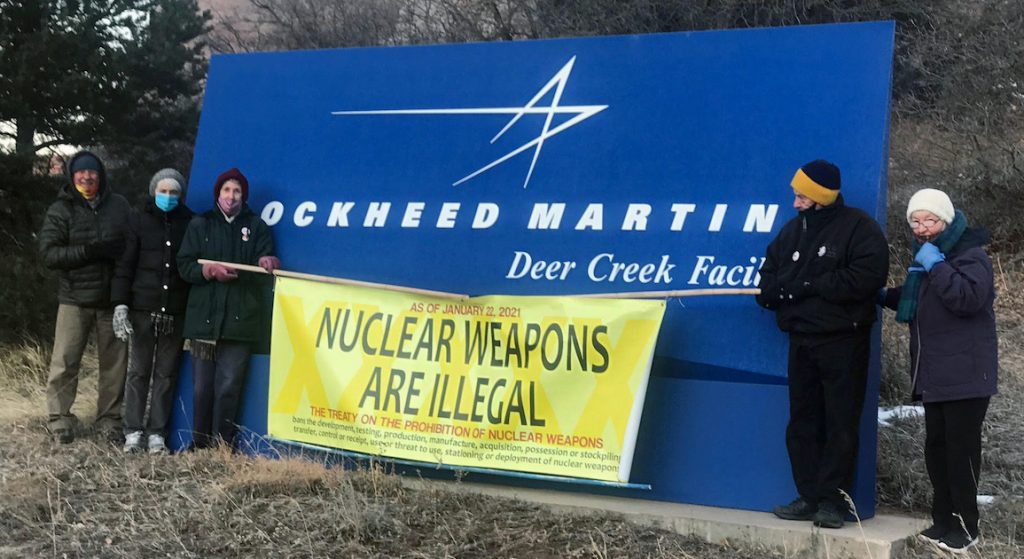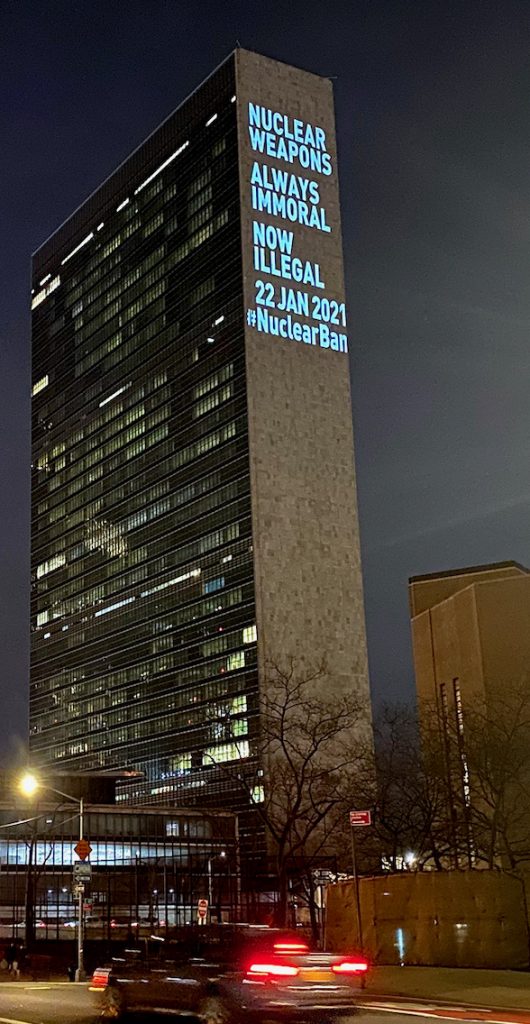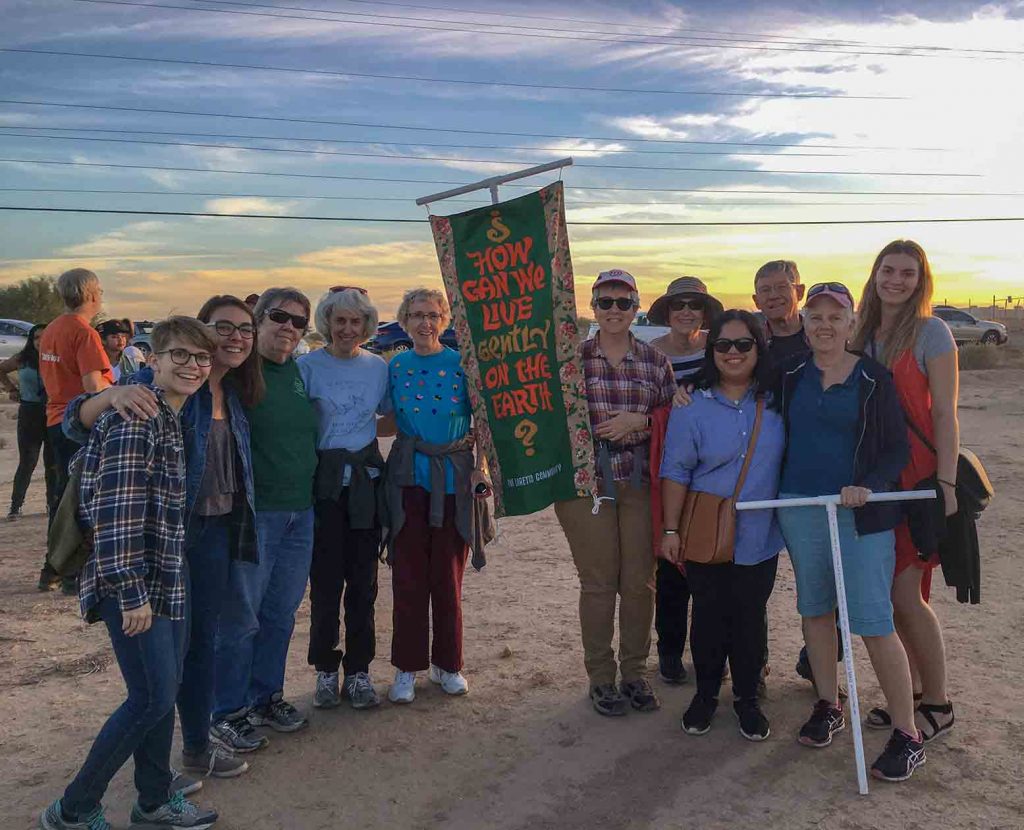A Long Journey and More to Go… 75 Years of Nuclear Madness
Posted on March 1, 2021, by Byron Plumley CoL

Photo by Byron Plumley
Driving through the prairie grass-lands of northeast Colorado one would never know there are nuclear weapons buried there. Out of sight, out of mind. There are 49 silos that house Minuteman III missiles armed with nuclear warheads governed from Warren Air Force Base in Cheyenne, Wyoming. Each weapon is 27 times more destructive than the atomic bomb used on Hiroshima in 1945. The current U.S. nuclear arsenal is 5,800 warheads at nine sites. Many of the warheads are waiting to be dismantled. About 400 nuclear-tipped missiles are stationed underground in Colorado, Wyoming, Montana, Nebraska and North Dakota. They’re staffed 24/7 and kept on hair-trigger alert, ready to launch if and when they receive orders from the president.

Photo by Seth Sheldon, ICAN
In January 1946 the first United Nations General Assembly resolution called for the elimination of nuclear weapons. In 1968 the United States signed the Nuclear Nonproliferation Treaty that called on the nuclear powers to move in good faith toward nuclear disarmament.
The Loretto Community has a long history of opposition to nuclear weapons beginning in the 1960s at Los Alamos, N.M. At the Assemblies in 1978 and 1979, the Community called for the abolition of nuclear weapons. Over the past 50 years Loretto members have protested nuclear weapons at Los Alamos, Rocky Flats, Colo., Oak Ridge, Tenn., and St. Louis and Kansas City, Mo.
Finally, in 2017, the United Nations Treaty on the Prohibition of Nuclear Weapons was adopted by 122 nations. Now, 75 years after Hiroshima/Nagasaki, the treaty has been ratified by 52 nations and entered into force Jan. 22 of this year. Today nuclear weapons are illegal according to international law. However, the law applies only to those nations that sign the treaty. The U.S. has continued to oppose the treaty along with other nuclear powers, but international treaties banning land mines and biological and chemical weapons have brought commitments providing an international norm against such weapons of mass destruction.
The road ahead continues the long journey toward the abolition of nuclear weapons. There is hope that international pressure may encourage the countries that host nuclear weapons (such as Germany, Belgium and Turkey) to eliminate them from their soil. And, that the international community might persuade the nine nuclear armed countries to disarm. As always, we must continue to work for justice and act for peace.

Loretto Staff Photo
